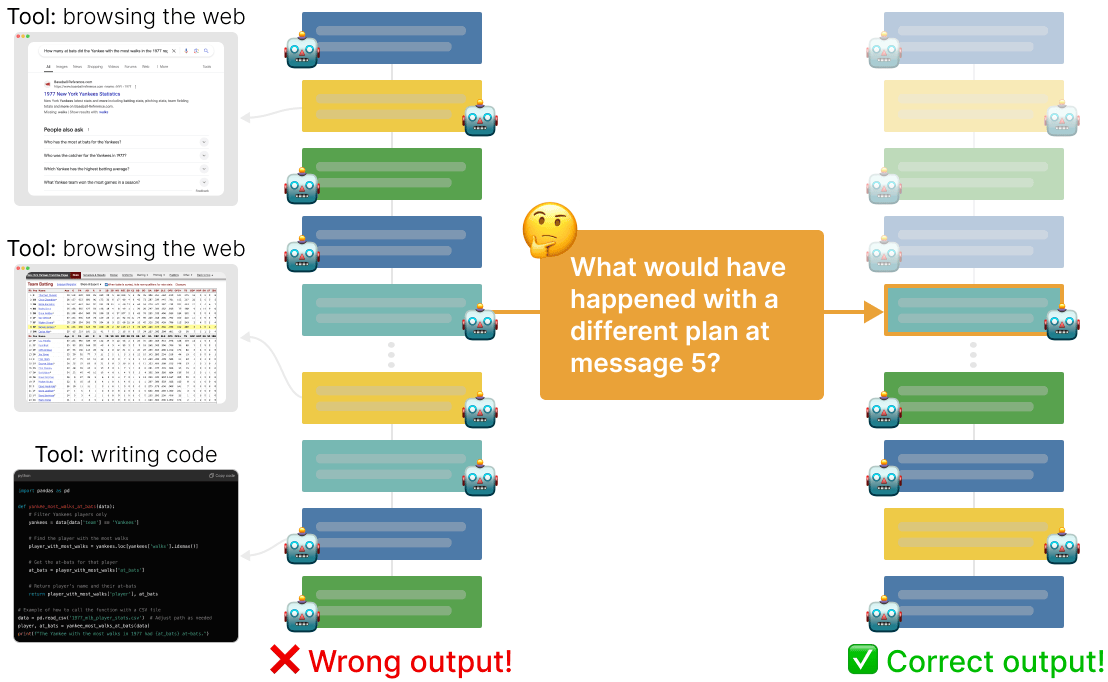A new wave of AI agents powered by large language models is emerging, where teams of these agents work together to complete complex tasks for users. However, developers face significant challenges, such as difficulties in reviewing lengthy conversations to find errors and limited tools for interactive debugging. To address these issues, researchers have created AGDebugger, an interactive debugging tool that allows users to browse conversations, edit past messages, and visualize message histories. A study involving 14 participants revealed effective strategies for guiding these AI agents and highlighted how important it is to have the ability to reset messages during the debugging process. This research sheds light on improving debugging tools for AI workflows.

Challenges in Debugging AI Teams: Introducing AGDebugger
AI technology is advancing rapidly, leading to the rise of teams made up of large language model (LLM) powered agents that work together on complex tasks. However, building and debugging these autonomous AI teams presents significant challenges for developers. Recent interviews with five developers in this field highlighted some key difficulties they face.
One major issue is the difficulty in reviewing long conversations between agents to pinpoint errors. Developers often struggle to understand where things go wrong, as conversations can be lengthy and complicated. Another concern is the lack of interactive debugging tools, which limits their ability to fix issues effectively. Developers also noted the need for better support in configuring these agents to improve their performance.
Introducing AGDebugger
To address these challenges, researchers have created AGDebugger, a new interactive debugging tool tailored for multi-agent AI systems. This innovative tool features a user-friendly interface that allows developers to easily browse and send messages between agents. It also includes functions to edit or reset past messages, making it easier to correct mistakes and fine-tune agent responses.
In a recent study involving 14 participants, common strategies for guiding these AI agents were identified, showcasing the tool’s effectiveness. Notably, the option to reset messages was found to be crucial for successful debugging. These insights could significantly improve the way developers interact with AI agents, enhancing the efficiency of agent workflows.
Conclusion
As AI technology continues to evolve, tools like AGDebugger will play a vital role in supporting developers. Understanding how to debug and manage AI agent teams is critical for future advancements in this exciting field. By addressing these challenges, developers can unlock the full potential of autonomous AI systems and their collaborative capabilities.
What is interactive debugging in multi-agent AI systems?
Interactive debugging is the process of finding and fixing problems in systems where multiple AI agents work together. It allows developers to see how each agent behaves, understand why issues occur, and make adjustments in real time.
How does steering work in multi-agent AI systems?
Steering refers to the ability to guide and influence the actions of AI agents. This means you can direct their behavior or decision-making processes to achieve better results. It’s like steering a car; you control where it goes.
Why is interactive debugging important for multi-agent systems?
Interactive debugging is important because multi-agent systems can behave unpredictably. By debugging interactively, developers can swiftly identify problems and refine the behavior of each agent, ensuring the system works effectively as a whole.
What are some common challenges in debugging multi-agent AI systems?
Some common challenges include:
– Complexity: Multiple agents interacting can create complex problems.
– Real-time behavior: Agents may act differently based on their environment, making it harder to replicate issues.
– Coordination: Ensuring all agents work together smoothly can be tricky.
How can I improve my skills in interactive debugging and steering?
To improve your skills, you can:
– Practice regularly with simulations and real problems.
– Learn from experts by attending workshops or reading relevant literature.
– Collaborate with others to gain new perspectives and techniques.





